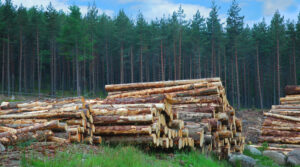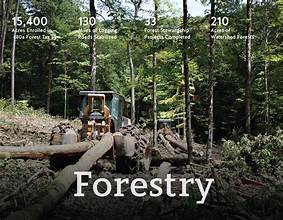As the world increasingly embraces sustainable practices, the logging industry is not left behind. With growing awareness of environmental issues, innovative solutions are emerging to make logging more eco-friendly. In 2024, several advancements are leading the charge toward sustainable forestry, transforming how we manage and harvest our forests. This article explores the top innovations in eco-friendly logging and their potential to pave the way for a more sustainable future.
1. Advanced Precision Logging Technologies
Precision logging technologies are revolutionizing the industry by minimizing waste and improving efficiency. Modern GPS and GIS (Geographic Information System) technologies allow loggers to pinpoint exact locations for cutting, reducing unnecessary damage to surrounding trees and soil. Drones equipped with high-resolution cameras and LiDAR (Light Detection and Ranging) are increasingly used to map forests, assess tree health, and plan logging activities with greater accuracy. This minimizes the ecological footprint of logging operations and ensures a more controlled and less invasive process.
2. Hybrid and Electric Logging Equipment
The move toward hybrid and electric logging equipment is another significant step in reducing the environmental impact of logging. Traditional diesel-powered machinery is known for its high emissions and noise pollution. In contrast, hybrid and electric logging equipment offer a cleaner alternative, reducing greenhouse gas emissions and noise levels. These advancements not only contribute to a healthier environment but also offer long-term cost savings for forestry operations through reduced fuel and maintenance costs.
3. Automated Harvesting Systems
Automated harvesting systems, including robotic feller bunchers and processors, are changing the landscape of logging. These systems use advanced sensors and AI to perform tasks such as tree cutting, delimbing, and bucking with precision. By automating these processes, the risk of human error is minimized, and the impact on the forest ecosystem is reduced. Automated systems also enable more efficient use of resources, as they can be programmed to selectively harvest trees based on size, species, and health.
4. Forest Management Software
Forest management software is becoming an essential tool for sustainable logging practices. These platforms provide comprehensive data on forest inventory, growth rates, and ecological conditions. By integrating data from various sources, including satellite imagery and ground surveys, forest managers can make informed decisions about when and where to harvest. This helps in implementing sustainable logging practices, such as selective logging and reduced-impact logging, which are crucial for maintaining forest health and biodiversity.
5. Biodegradable Logging Products
The development of biodegradable logging products is a promising innovation for reducing the environmental impact of logging. Traditional logging products, such as ropes, tags, and markers, are often made from synthetic materials that contribute to pollution. In contrast, biodegradable alternatives are made from natural materials that break down over time, leaving no harmful residues. These products are designed to minimize their environmental footprint and support the overall goal of sustainable forestry.
6. Integrated Pest Management
Integrated pest management (IPM) is an innovative approach that combines biological, cultural, and mechanical methods to manage forest pests and diseases. By using natural predators, introducing disease-resistant tree varieties, and applying targeted treatments, IPM reduces the need for chemical pesticides, which can have harmful effects on the environment. This approach not only helps in maintaining forest health but also supports sustainable logging practices by minimizing the impact of pest management activities.
7. Forest Certification and Monitoring
Forest certification programs, such as those offered by the Forest Stewardship Council (FSC) and the Programme for the Endorsement of Forest Certification (PEFC), play a crucial role in promoting sustainable logging practices. These certifications ensure that logging operations adhere to strict environmental and social standards. Innovations in monitoring technology, such as blockchain and remote sensing, are enhancing the transparency and traceability of certified products. This helps consumers make informed choices and supports responsible forestry practices.
8. Reforestation and Afforestation Initiatives
Reforestation and afforestation are vital components of sustainable forestry. Innovations in these areas include the use of drone technology for planting trees and the development of seed banks to preserve genetic diversity. By investing in reforestation and afforestation efforts, the logging industry can offset the environmental impact of logging activities and contribute to the restoration of degraded lands. These initiatives are essential for maintaining ecological balance and ensuring the long-term health of forest ecosystems.
9. Energy-Efficient Processing Facilities
Energy-efficient processing facilities are crucial for reducing the carbon footprint of the logging industry. Innovations in processing technology, such as the use of waste heat recovery systems and energy-efficient machinery, are helping to lower energy consumption and greenhouse gas emissions. By adopting these technologies, logging operations can reduce their environmental impact and improve their overall sustainability.
10. Community Engagement and Education
Community engagement and education are fundamental to promoting sustainable forestry practices. Innovations in this area include the development of educational programs and partnerships with local communities to raise awareness about the importance of sustainable logging. By involving communities in forest management and conservation efforts, the logging industry can foster a sense of stewardship and support for sustainable practices.
Conclusion
The innovations in eco-friendly logging discussed above represent significant strides toward a more sustainable forestry industry. By embracing advanced technologies, adopting cleaner equipment, and implementing best practices in forest management, the logging sector can reduce its environmental impact and contribute to the preservation of our planet’s vital resources. As we move forward, continued investment in these innovations will be crucial for ensuring that logging practices align with the principles of sustainability and environmental stewardship.



